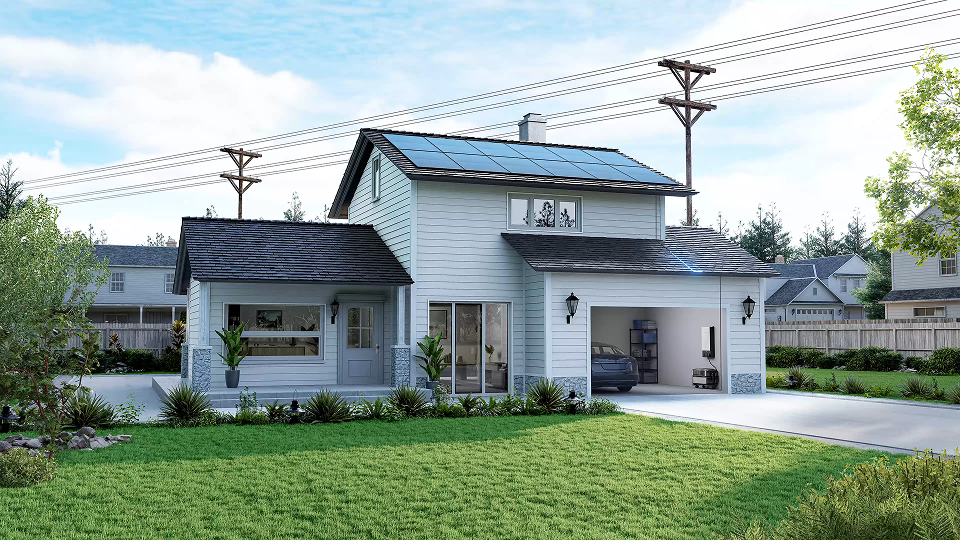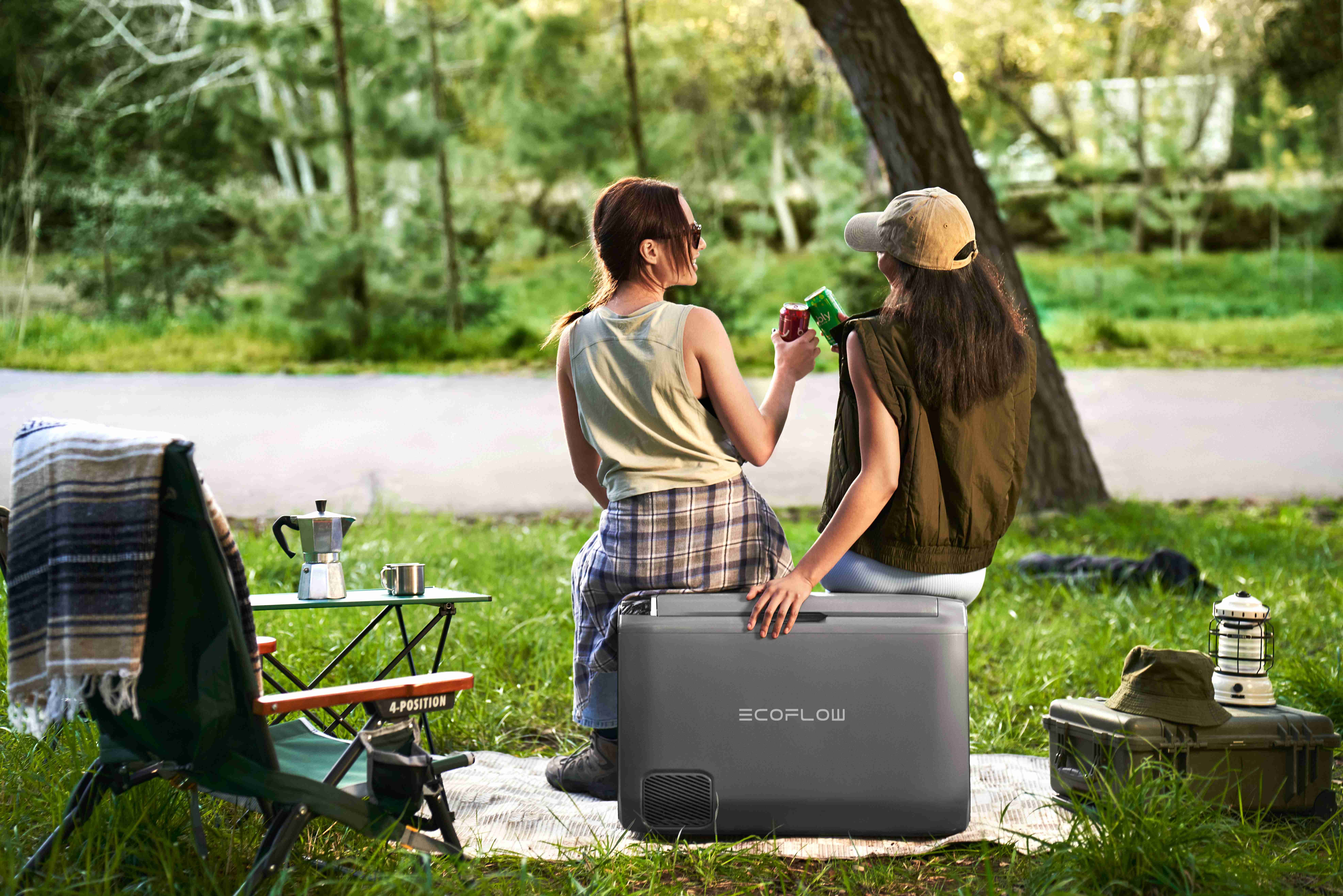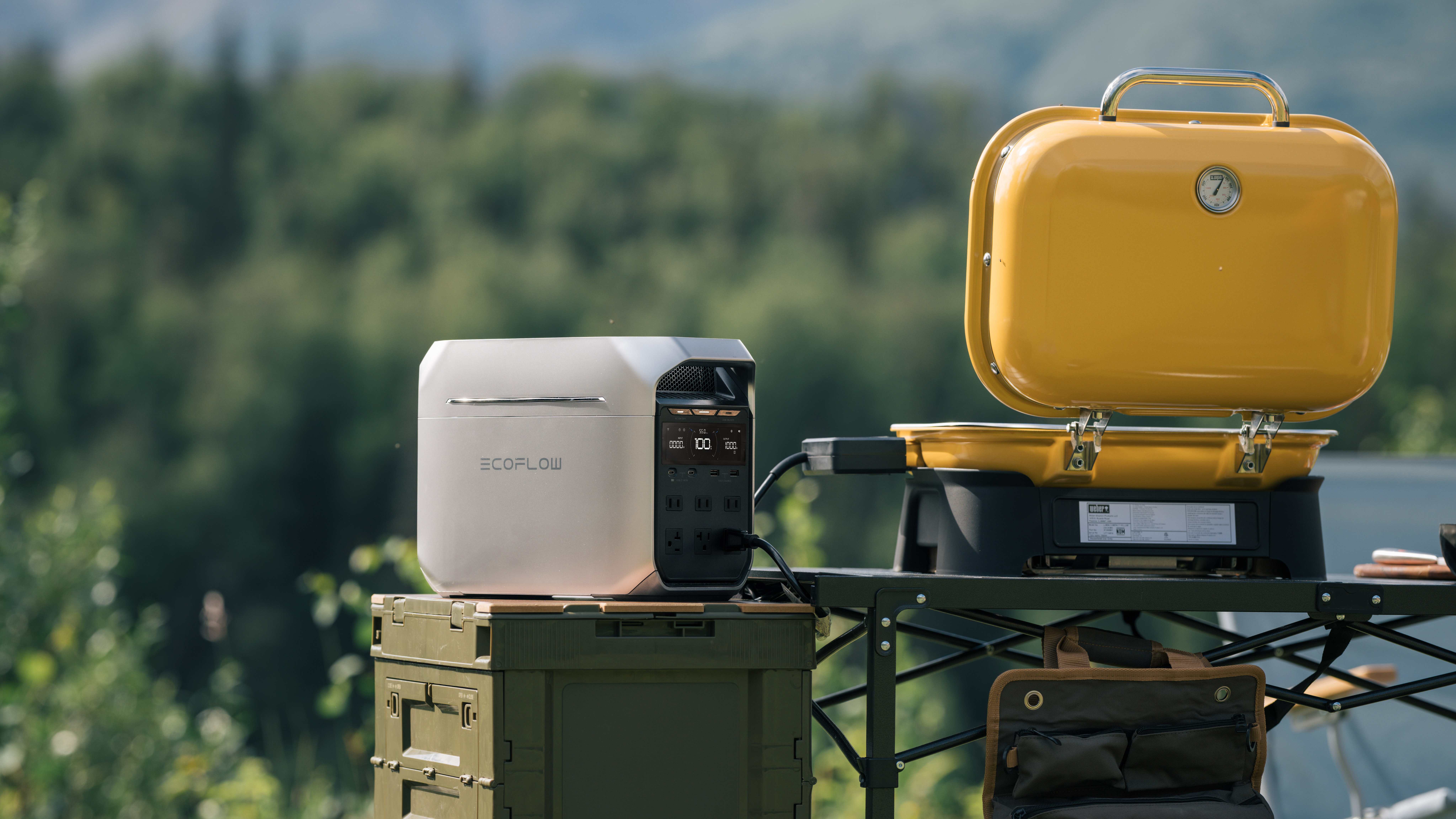Build a Self-Sufficient Garden Space: Run on Solar, Cut Your Gas Bill
- Define the Purpose of Your Garden Space
- Estimate Your Energy Needs
- Choose the Right Solar Panels
- Add a Portable Power Station or Solar Battery
- Reduce Your Garden’s Energy Waste
- Say Goodbye to Your Gas Bill
- Weatherproof and Maintain Your Setup
- Expand as You Go
- Add Comfort: Kitchen, Cooling, and More
- Build for Blackouts Too
- Conclusion
- FAQs: Self-Sufficient Solar Living in Your Garden
Imagine stepping into your backyard and entering a peaceful, fully powered living space that doesn’t rely on your home’s energy or gas lines. No noise. No utility costs. Just clean, quiet power from the sun. A self-sufficient solar-powered garden setup is more than possible—it’s practical, flexible, and ready for today’s energy-smart lifestyle.
Let’s walk through how to build it step by step.
Define the Purpose of Your Garden Space
Before choosing your solar panels or power station, decide how your garden space will be used. Different uses demand very different energy setups. Below are four common types, along with their typical power needs and setup advice.
Garden Office (Light Daily Use)
Common Devices
- Laptop: 60W × 6 hrs = 360Wh
- LED lights: 40W × 5 hrs = 200Wh
- Wi-Fi router or extender: 10W × 8 hrs = 80Wh
- Desk fan or heater (seasonal): 80–1000W × 2 hrs = 160–2000Wh
Daily Energy Range: 650Wh to 2.5kWh
Recommended Setup
One 400W solar panel (5 sun hours = ~2kWh/day)
One 2–3kWh portable power station
Optional: EcoFlow DELTA 2 or DELTA Pro for heavier loads or heater use
Tip: Add blackout blinds or insulation for year-round use
Tiny Guesthouse (Full Day + Overnight Use)
- Mini fridge: 100W × 24 hrs = 2400Wh
- LED lights: 40W × 5 hrs = 200Wh
- Laptop/phone chargers: 80Wh
- Heater or AC (light use): ~500–800Wh
- TV or projector: 60W × 3 hrs = 180Wh
- Electric kettle or cooker: 1000W × 0.5 hr = 500Wh
Daily Energy Range: 3kWh to 5kWh
- 800–1200W solar panel array
- DELTA Pro or DELTA Max with expansion battery
- Optional: Smart Home Panel if also used as backup during blackouts
- Tip: Use motion lights outside and efficient appliances inside to save storage capacity
Greenhouse or Grow Room (Continuous, Seasonal Use)
- Grow lights: 200W × 10 hrs = 2000Wh
- Ventilation fan: 60W × 10 hrs = 600Wh
- Heat mat or air pump: 30W × 10 hrs = 300Wh
- Humidity controller: 50W × 8 hrs = 400Wh
Daily Energy Range: 2.5kWh to 4kWh
- Two 400W solar panels or larger rooftop system
- One 3–5kWh battery (EcoFlow DELTA Pro ideal for long-duration supply)
- Optional: Solar tracker or smart panel for optimizing sun input
- Tip: Place panels close to the structure to reduce cable loss


Outdoor Lounge / Yoga Room (Low Use, Comfort-Focused)
- String lights: 20W × 5 hrs = 100Wh
- Bluetooth speaker: 10W × 4 hrs = 40Wh
- Fan or heater: 80–1000W × 1 hr = 80–1000Wh
- Phone charger: 10W × 2 hrs = 20Wh
Daily Energy Range: 200Wh to 1.2kWh
- One 220–400W portable solar panel
- One 1–2kWh battery (EcoFlow RIVER 2 Pro or DELTA 2)
- Optional: EcoFlow GLACIER fridge for drinks, powered from the same station
- Tip: Use solar lanterns or rechargeable lamps for ultra-low-power evenings
Next Step: Once your space has a clear purpose and expected power range, you can move on to sizing your solar setup. Whether you need 1kWh or 5kWh per day, it's time to break down exactly what devices you’ll use—and how much energy each will draw.
Estimate Your Energy Needs
A good solar setup starts with understanding what you’ll power. Even within the same type of garden space, daily usage can vary depending on your routines and seasons. Start with a detailed list of all devices and tools, along with how long you’ll use each one.
| Device | Power Use (Watts) | Daily Use (Hours) | Daily Energy (Wh) |
| LED lights | 40 | 5 | 200 |
| Laptop | 60 | 6 | 360 |
| Mini fridge | 100 | 24 | 1200 |
| Fan or ventilation | 80 | 8 | 640 |
| Electric kettle/heater | 1000 | 0.5 | 500 |
Most solar-powered garden setups fall in the 1–2kWh/day range, though guesthouses or grow rooms may need more. Knowing your exact daily energy demand helps you choose the right battery and solar panel size for reliable performance.


Choose the Right Solar Panels
Now you need a solar panel system that can generate enough energy each day. For example:
- A 400W panel under good sunlight (5 hours/day) can produce about 2kWh per day.
- Portable solar panels are easier to install and move if needed.
If you live in a cloudier area, consider adding 20–30% more panel capacity to compensate for lower sun hours.
Also consider panel placement:
- South-facing for most locations.
- Avoid shade from trees or buildings.
- Angle panels according to your latitude.
Add a Portable Power Station or Solar Battery
Solar panels work during the day. But you’ll need a power station or battery to store energy for nighttime or cloudy periods.
A portable power station (like EcoFlow’s solar generators) is perfect for a garden unit because:
- No need for hardwiring.
- Indoor-safe and silent.
- Can power AC devices directly.
- Many models charge fully in 2–3 hours with solar panels.
Look for features like:
- Battery capacity of at least 2kWh.
- AC output of 1500–3000W for tools or appliances.
- Smart app control for real-time tracking.
- Expandable batteries if your needs grow.
With solar + battery, your garden setup runs independently from your home grid.
Reduce Your Garden’s Energy Waste
Saving energy means you need fewer panels and less storage. Here’s how to lower usage:
- Use LED lighting instead of halogen.
- Pick energy-efficient appliances (rated for low wattage).
- Add insulation to garden structures.
- Choose solar-powered outdoor lights.
- Install motion sensors or timers on lighting and fans.
Less waste = fewer panels = lower cost and faster setup.
Say Goodbye to Your Gas Bill
Many garden cabins still use propane or natural gas for heating or cooking. But solar gives you an alternative—and a chance to stop paying for gas altogether.
Here’s how to cut that gas bill with clean energy:
- Use an electric kettle or induction stove powered by your battery.
- Switch to an infrared or ceramic heater instead of a gas burner.
- Add solar thermal panels if you need hot water for washing or bathing.
Over time, even small changes like these can eliminate your outdoor gas use—and reduce your overall gas bill at home.
Weatherproof and Maintain Your Setup
A garden solar system needs to last through sun, rain, and wind. Protect your setup with:
- Waterproof enclosures for power stations.
- Panel covers for heavy snow or storms.
- Proper ventilation around batteries.
- Routine cleaning of solar panels every 2–3 months.
You should also check system health through app-based tools (available on many solar generators). Maintenance is simple and usually takes just minutes.
Expand as You Go
Start small, then grow. Your solar garden can always be scaled up with:
- Extra panels to boost charging speed.
- Battery expansion packs.
- Solar-powered water pumps or irrigation tools.
- Outdoor Wi-Fi extenders powered by solar.
Modular systems make this easy. Some users even connect their garden setups back to their home to reduce energy use inside the house.
Add Comfort: Kitchen, Cooling, and More
Once your solar and battery system is ready, you can level up your outdoor life by adding comfort—without worrying about energy limits.
Create an Off-Grid Outdoor Kitchen
Cooking outside usually involves gas stoves or charcoal. But now you can switch to electric tools fully powered by the sun:
Portable induction cooktops for fast, safe heating
EcoFlow GLACIER for refrigeration and ice-making
Electric kettles and air fryers for quick prep
EcoFlow GLACIER runs on solar or your DELTA series power station. It keeps food and drinks cold all day—even without being plugged in. It also makes ice, so you can enjoy cold drinks in summer.
Stay Cool with Solar-Powered Climate Tools
If your space gets hot in summer, staying comfortable is key.
Add shades and heat-reflective curtains
Use solar ventilation fans to keep air moving
Plug in a portable air conditioner during heatwaves
For serious comfort, the EcoFlow WAVE 3 portable AC cools or heats small spaces without fuel, fumes, or a grid connection. It fits perfectly inside a garden cabin, shed, or glasshouse and runs quietly off solar-charged batteries.
Now your garden space isn’t just livable—it’s enjoyable year-round.
Build for Blackouts Too
Self-sufficient garden setups aren’t just about comfort—they also help during emergencies.
If a storm cuts power to your house, your garden’s solar battery becomes a vital backup. You can:
- Charge phones and lights
- Power medical devices
- Run a small heater or fridge
For full-house coverage, EcoFlow DELTA Pro with Smart Home Panel 2 connects your solar power directly to your home circuits. During a blackout, it takes over automatically—no gas needed.
That means your garden setup can serve the house too, covering:
- Fridge and freezer
- Wi-Fi routers
- Security cameras
- Electric stove or microwave
In areas with frequent outages, this kind of setup saves stress—and money—over time.


Conclusion
A few solar panels. A smart battery. Some well-placed comforts. That’s all you need to build a garden space that runs on its own.
It’s not just about cutting your gas bill or unplugging from the grid. It’s about creating a space that brings peace, purpose, and freedom into your everyday life.
Start with what matters most: comfort, quiet, and energy freedom. Then grow your setup as your needs grow.
If you're looking for solar tools to build your own garden power station, EcoFlow offers complete systems that support every step of your journey—from charging your fridge to powering your entire home.
FAQs: Self-Sufficient Solar Living in Your Garden
Q1:Can a solar-powered garden room run all year long?
Yes, it can work all year—if you size your system right. In winter, solar hours drop, so use larger battery capacity and extra panel input. Add thermal insulation to reduce heating needs. Many users add a secondary battery or solar panel in winter months. With careful planning, your garden room can stay warm, lit, and powered—even through snowy days.
Q2:How long does it take to fully charge a power station with solar?
Charging time depends on panel wattage and sunlight. A 400W panel under full sun for 5–6 hours can recharge a 2kWh power station. Cloudy days or partial shade slow things down. Want faster charging? Add extra panels in parallel. Many EcoFlow models also support AC charging as backup, so you can top up overnight if needed for early morning use.
Q3:Is it legal to set up a solar-powered garden office?
In most U.S. regions, it’s legal to build and power a garden office with solar. But if you plan plumbing, grid tie-ins, or foundation changes, check with your local zoning office first. Rules vary by city and state. Off-grid solar cabins often require fewer permits. Always consult your city’s building department before major upgrades to avoid fines or rework.
Q4:Can solar help lower my home's gas bill, not just in the garden?
Yes, using solar-powered devices in your garden reduces gas use at home. Replace propane heaters with electric ones. Switch your gas grill for an induction stove. Over time, these small swaps reduce your natural gas demand. That means a lower gas bill—especially if you also use solar to power hot water, electric mowers, or pool pumps connected to your outdoor setup.
Q5:What’s the best EcoFlow system for this setup?
For most garden rooms, the EcoFlow DELTA series is the smart choice. DELTA units offer high output, fast solar input, and expandable batteries. Use one with a 400W solar panel and you can power lights, laptops, and appliances daily. Add the Smart Home Panel if you want whole-home connection or blackout coverage. It's safe for indoors, silent, and fully solar-ready.